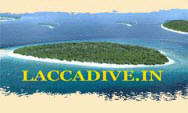|
To enhance
tourism that has significant positive social impact and
negative environment impact, the Lakshadweep administration
has taken a holistic view of tourism development. A policy
of high value-low volume tourism focused on preservation of
local environment, ecology and culture.
In the environmental analysis of the Department of tourism,
it has been observed that preservation of environment is the
cherished goal of Lakshadweep. In fact environment is the
basic raw material for tourism for these islands.
In order not to adversely affect the physical environment
emphasis of the administration is to promote tourism only in
those islands that can sustain it keeping in view the
concept of carrying capacity. The facilities are developed
in such a way that they do not result in loss of
bio-diversity. No development is permitted in geologically
unstable zone. Adequate buffer zone has been provided
between development and existing shoreline.
The construction of high-rise structures is banned. The
policy is to allow structures that are in harmony with
nature. It is ensured that construction materials and
methods are compatible with environment and height, shape
and location of building merge with the natural vegetation.
All tourism development schemes are first analyzed from
environmental impact point of view and only if they meet the
norms in this regard implementation is taken up. Following
are broad EIA (Environment Impact Assessment) norms.
1 All proposed construction should have thatched roof or
tiled sloping roof.
2 Only bio toilets to be installed as far as possible.
3 Rain water harvesting to be set up to conserve fresh
water.
4 Use of Pump Sets should be minimized; the pump set in any
case should have a cut off mechanism to ensure that water
below the minimum safe level is not drawn.
5 Waste disposal system like incinerators for
non-recyclable/non bio degradable waste should be installed
and system of returning all non-biodegradable waste must be
in position.
6 Minimum cutting of tress/ greenery and maximum plantation
of trees, plants, shrubs and creepers.
7 Carrying capacity study of the island before taking up
development in any uninhabited island
8 A regular system to educate tourists about environment
fragility of eco system.
TOURISM POLICY-SALIENT FEATURES
1 Preserve fragile ecological and environmental structure.
2 Preserve local culture and social fabric.
3 High value and low volume, tourism
4 Sustainable tourism based on the “carrying capacity” of
the islands.
5 Sea based SHIP tourism for larger numbers.
6 Air based AIRLINE/HELICOPTER tourism for high value
tourists only.
7 Local features:
1 No violation of prohibition
2 Promotion of folk art and culture
3 Eco friendly water sports, mainly non-mechanized.
4 Promotion of Scuba diving.
5 Promotion of Solar Power and Biological toilets.
6 Collection of non-biodegradable waste
7 Disposal of kitchen waste in open sea
8 Promotion of smokeless “Chula” in kitchen
9 Discouragement to diesel generation
10 Installment of Silent Generators to avoid noise
pollution.
Islanders are being trained in Scuba diving so that they not
only know about marine wealth but also contribute in
maintaining the ecology of the islands and works as eyes and
ears of the Administration.
The efforts and policy of the Tourism Department of
Lakshadweep was appreciated at National level and the
Hon’ble President of India at a function gave the maiden
National Eco Tourism Award for 1996-97 to Lakshadweep on
25th January 1998.
Lakshadweep Tourism Department’s efforts to promote
eco-friendly tourism were appreciated at international
tourism Bourse held in Berlin, Germany.
|

